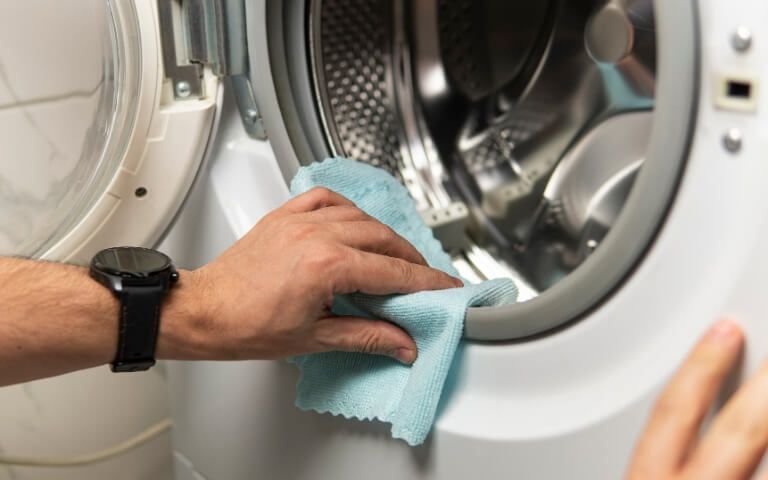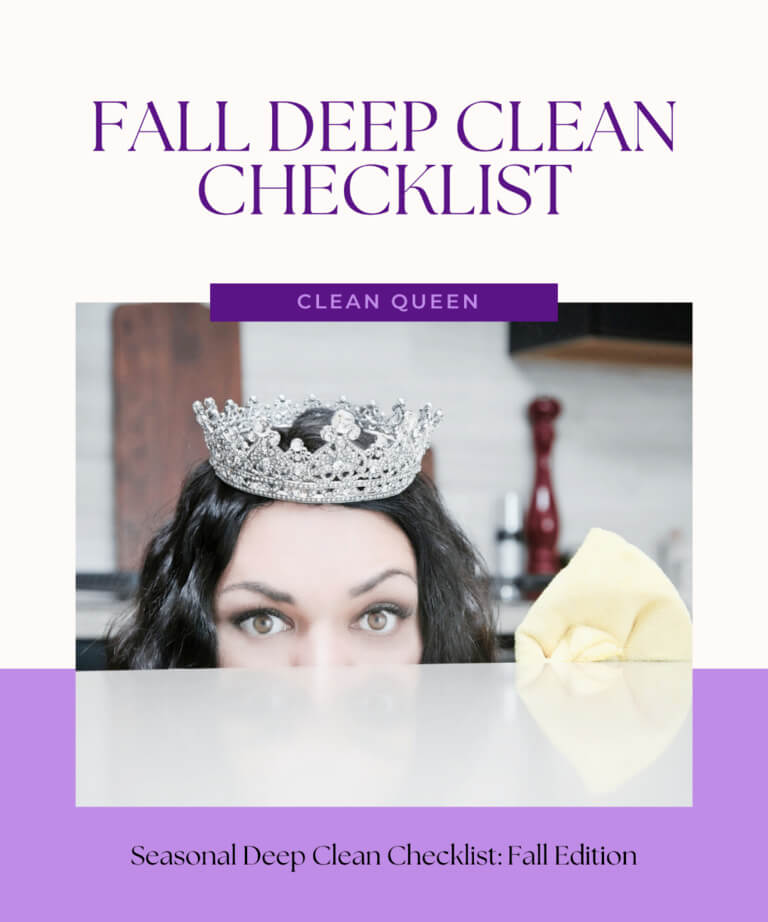Why Does Your Washing Machine Smell Bad? A Step-by-Step Guide to Deep Cleaning a Washer & How to Keep it Odor-Free

As if keeping up with laundry isn’t stressful enough, now your washing machine smells funky and you don’t know why. Often the symptom of an underlying issue, it’s best to tackle washing machine odors right away to prevent any health issues or performance failures.
In collaboration with Kura Home Services, this guide explains the common causes of washing machine odors, what can happen if you ignore them, and how to take action. Get your washing machine smelling fresh again with these deep cleaning tips.
Top Reasons Why Washing Machines Develop Bad Smells
You’re not alone. Here are the most common causes of washing machine odors:
- Trapped Moisture: Washing machines, especially front-loading models, often retain water in seals, hoses, and drums, creating a breeding ground for mold and mildew.
- Detergent and Fabric Softener Residue: Overusing detergent or fabric softener can lead to hidden buildup, trapping dirt and odor-causing bacteria.
- Dirty Filters or Drains: Clogged filters or drains collect lint, hair, and debris, which can decay and produce foul odors.
- Improper Maintenance: Forgetting to clean your washer regularly allows dirt and grime to accumulate, contributing to bad smells.
Reasons Why You Don’t Want to Ignore a Smelly Washing Machine
Beyond stress and frustration, ignoring a smelly washing machine can lead to:
- Health Risks: If the odor is caused by mold or mildew growth, the airborne spores can negatively impact your family’s respiratory health, aggravating allergies and/or leading to the onset of new symptoms. Young and elderly lungs are most susceptible to the effects of toxic air contaminants.
- Performance Failures: Odors often signal buildup that can interfere with your machine’s cleaning power and overall performance.
- Damaged Clothing: Residue and bacteria may transfer onto your clothes, transferring the unpleasant odor and/or staining the fabric. By promptly addressing the problem, you safeguard your family, your laundry and your washing machine.
A Professional Cleaner’s Guide on How to Deep Clean Your Washing Machine
Step 1: Gather Cleaning Supplies
At Clean Queen, we exclusively use all-natural eco-friendly cleaning products to safeguard your family’s health and the environment. For this project, we recommend the following items:
- Mrs. Meyer’s Multi-Surface Cleaner (or similar)
- Bar Keepers Friend Cleanser (or similar)
- White Vinegar
- Baking Soda (optional)
- Microfiber cloth or soft rag
- Small soft-bristled brush/toothbrush
- Small bowl or bucket
- Washing Machine Cleaning Tablet (optional)
Step 2: Clean the Detergent Drawer
Every washing machine is different so this step may require additional guidance from your specific model’s user manual.
- Remove the drawer & soak in warm soapy water.
- Use a brush to gently scrub away any sticky residue or mold.
- Rinse & dry thoroughly
- Reinstall the drawer.
Step 3: Clean the Gasket & Drum
- Front-load Washer: Spray cleaner directly into the drum and around the rubber gasket.
- Top-load Washer: Apply cleaner around the rim and agitator, if applicable.
- Let sit for a few minutes
- Gently scrub with a small brush or microfiber cloth
- Pay special attention to the drum edges and gasket folds.
- Wipe with a damp cloth to remove stubborn buildup or loosened debris.
- If there are visible stains or mineral deposits, apply Bar Keepers Friend to a soft cloth and scrub gently as needed.
Step 4: Check the Filter, Lint Trap & Drain Lines
Some washers feature a removable lint trap and/or filter, often located behind a small panel at the bottom of the machine.
- Place a towel under the panel in case of leakage.
- Remove the filter/lint trap & rinse in warm water.
- Use a small brush dipped in your preferred cleaning solution to remove any buildup.
- Flush out drain lines to ensure proper water flow and prevent blockages that can cause odors or performance issues.
- Replace the filter & close the panel.
Step 5: Run an Empty Hot Water Cycle
High-temperature water is most effective at killing odor-causing bacteria and breaking through stubborn residue.
- Program your washer to the hottest & longest available cycle.
- Add your preferred cleaning agent to the detergent dispenser:
- Option A - 1/2 cup of Mrs. Meyer’s Multi-Surface Cleaner
- Option B - 1 cup of white vinegar
- Option C - Washing machine cleaning tablet
- Add 1-2 tablespoons of baking soda (optional)
- Complete the full wash cycle.
Step 6: Rinse & Dry
- Run a short rinse cycle with hot water.
- Leave the door or lid open for a few hours to completely air dry.
5 Ways to Keep Your Washing Machine Smelling Fresh
After you’ve successfully eliminated the foul odor and your machine is smelling fresh again, shift your efforts towards odor prevention with these best practices:
- Keep the Laundry Area Clean: Prevent dirt and dust from invading your washing machine by keeping the surrounding area clean with these tips for regular laundry room upkeep.
Include the laundry room on your rotational deep cleaning checklist.
- Use the Right Amount of Detergent: Excess detergent leads to residue buildup. If you ever notice leftover soap in the drum, consider using less detergent.
Verify that the detergent is compatible with your washing machine, especially if you have a high-efficiency model that economizes water usage.
- Regular Maintenance: Try to deep clean your washer once a month or seek help from a professional to keep your washing machine operating at peak performance.
An appliance cleaning expert can help you identify the source of the smell and use professional-grade cleaning tools to effectively address the issue.
- Prevent Mold & Mildew Growth: Leave the door or lid slightly open between every wash cycle to let the machine air dry.
After you’re done using the washer for the day, use a soft cloth to wipe dry the rubber gasket, especially the inner ring where mold and mildew love to hide.
- Run a Weekly Hot Water Cycle: Complete a hot wash cycle at least once a week to help kill bacteria and weaken residue build-up.
If you prefer to wash your clothing in cold or warm water, towels and bed linens are often more compatible with a hot water cycle.
A Washing Machine Fit for a Queen
You work hard managing your household’s laundry, but it’s difficult to feel confident in a job well done when you’re greeted with unpleasant odors every time you open the washer.
By embracing preventative cleaning habits, and following these deep cleaning steps when necessary, you can address bad smells at the source and make sure they never come back.
Have more questions or need help with deep cleaning? At Clean Queen, we’re experts in keeping Denver area homes spotless and odor-free.
Contact us today for professional house cleaning services that bring freshness to every inch of your home!
FREE Fall Deep Clean Checklist
Thank you for reading this blog post, we are offering a free resource for a limited time only. Enter your information below to download the checklist PDF.

